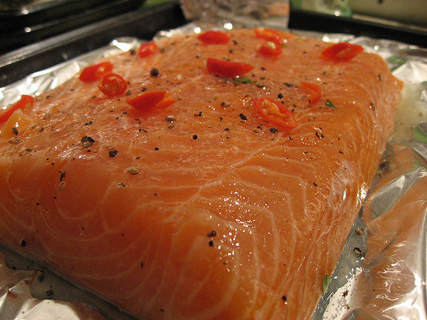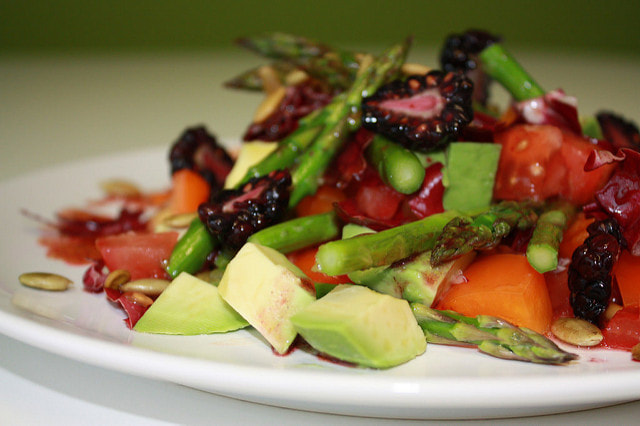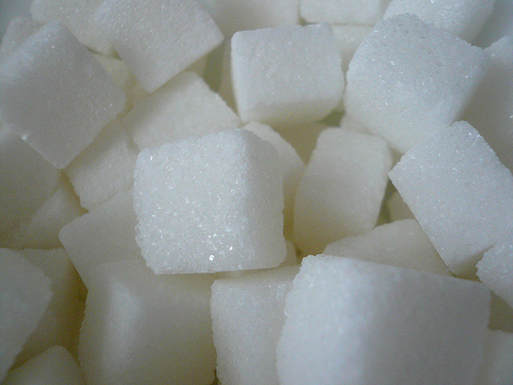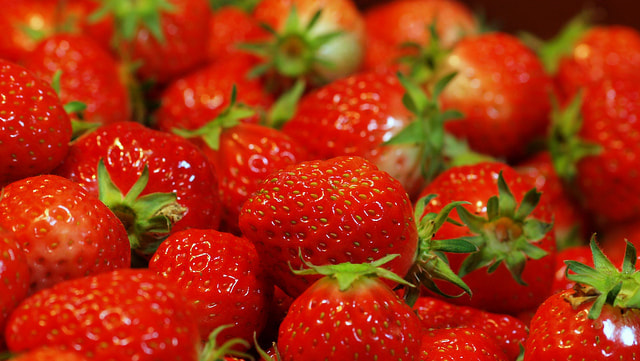Food is a basic, primal, essential component of our lives.It plays a role in our personal and cultural history. It informs our biology and genetic expression. It triggers powerful memories and holds negative and positive associations. It has a strong place in the rituals of our seasons, and our day to day lives. Food provides us with a wealth of sensation, pleasure, creativity, nutrients, health, energy, and metaphor.
The choices we make around food are powerful indicators of our relationship to self, namely our attunement with our own needs, our sense of self-worth, our sense of lack and security, our experience of empowerment or disempowerment, and even our relationship with our mothers! Our behaviors around food can highlight the inner experiences, beliefs, or feelings that are driving us. Most of the time, these are unconscious to us. Food is primal and has been apart of our lives from the beginning. Literally as our bodies were forming within our mothers’ wombs we are being nourished by the foods she ate and those flavors and nutrients and even smells were coming in through the placenta and building a foundation for our own relationship with food. Breastmilk by mom is mutable and shifting to meet baby’s needs from morning to night and throughout the months of nursing. Formula is not mutable, but static in its composition, only the amount given changes for baby. Solid foods are introduced in the container of our relationship to our caregivers and family of origin. Are meal times pleasurable for baby? Or stressful? Is baby given appropriate foods at the appropriate developmental stage? The stress of a meal can be internal (too much food, too complex, too soon; or not enough food) or it can be external (is there tension in the family? Does it feel safe to baby to explore food with mouth and fingers?) Family meals can lay additional foundations as children grow up. Is there enough food? Is poverty an issue? Do family members get along? How is food viewed in the family? Is the family mindlessly eating in front of the television and not talking to one another directly? Is there a shared meal from which everyone partakes? Is the children’s food separate from the adults? Is the food beautiful? Tasty? A celebration? A chore? The culture has its role as well. Eat more of this, less of that. This food will kill you, this food will save you. Lose weight. Gain weight. Try and attain an ever shifting and impossible ideal by controlling your relationship with food and your body. Women and men are subjected to this onslaught. We are all told to be beautiful according to media’s standards, which have nothing to do with being healthy, or culturally diverse. As we grow up we experience life and as a result of our experiences we make decisions. We decide whether we are lovable or not, whether we are safe, whether we are worthy of love and kindness by others, whether to hide our bodies or exploit them to get what we need, whether we belong or don’t belong and how we feel about all of it. This is normal, to make such decisions. We are human. Life is messy and we are all doing the very best we can. One day, though, you can begin to take stock. You can begin to reflect and notice your behaviors and investigate what decisions you did make about yourself. And sure it may have seemed logical at the time. But those limiting beliefs are not serving you anymore. Believing you are unlovable, leads only to being unlovable. When we can forgive ourselves for believing that, with understanding and compassion for how we drew such a conclusion, then we are free to investigate being lovable. And if we are lovable, than it follows that we are also worthy of great care and consideration. The person who can best supply that care and consideration? It’s you. Here are 8 key points when it comes to using food as a gateway:
1 Comment
It is so easy right now to look at the state of the world, or the current reality and see problems that need fixing. Politics depends on this viewpoint; all the candidates rallying on the fact that things are terrible and will only be better if “I” am in charge. Now, I am all for being realistic and making practical changes. However, I’d like to invite us to look under the surface of action, at mindset. Our mindset refers to the state of our minds, or perspective, as we look, assess, or make sense of things. Mindset is how we approach a situation. It includes our biases, our personal filters, our cultural lens. Without digging too deep into this rich territory, let’s keep it somewhat simple and talk about a very common mindset, which is the mindset of judgment. When we judge we decide, often automatically, if something is right or wrong. Judgment is great friends with black and white thinking.
Now it gets confusing, when folks want to argue that some things definitely are wrong. Like child abuse for example, or animal cruelty, or poverty and homelessness. Again, I am for positive action and change to address such things. However, I am suggesting that we can be more productive in transforming reality, when we are willing to drop the judgment that things are not as they should be. Indeed, whenever we want anything to be different than it currently is, we create suffering for ourselves. This happens easily as we look at world affairs, but also at the state of our relationships, marriages, health, bank accounts, physical image, wardrobe, cars, homes, the list goes on and on. We are encouraged to compare and come up short on so many things, because then we get motivated to buy things, do things, vote in order to address our own needs for change. But what if change happened more readily when we first can simply accept what is? Accept the current reality, whatever it is. I’m not saying you have to be happy about it, or even love it, but just accept it. It’s what’s happening. First and foremost, when we engage with anything by first accepting, rather than immediately wanting to or trying to change it, we are first present, and able to connect more authentically with what is. Coming from a place of always trying to change a thing is exhausting and limits our ability to see clearly from the get go. Again, we are so encouraged to do this and to see deficits and deficiencies everywhere. We get a sense of identity from it, an identity that cares or achieves or advocates. It can be really scary to consider dropping the mindset of judgment, because we might be afraid of losing a battle, or losing ground, or being seen as apathetic, passive, or uncaring. Consider that we can put all of our caring and education to work and make positive changes from a place of acceptance. We can be at peace first with what is, and then move forward from there, from a place of inspiration and hope and loving, rather than anger and judgment. Our actions then become nourishing and fulfilling actions, rather than a depleting and ongoing fight. In The Power of Now, Eckhart Tolle puts it this way: “Don’t look for peace. Don’t look for any other state than the one you are in now; otherwise, you will set up inner conflict and unconscious resistance. Forgive yourself for not being at peace. The moment you completely accept your non-peace, your non-peace becomes transmuted into peace. Anything you accept fully will get you there, will take you into peace. This is the miracle of surrender.” It is a nourishing act for ourselves and all of those in our reality to choose into a loving approach, and let go of the fight. Fighting begets more fighting. Loving begets change. Complex issues appear to need complex solutions, but I am going to suggest the opposite is true, that lasting change results from simple interventions. Taking a break before an argument escalates, doing what it takes to “cool down” from heated interactions, giving yourself the gift of a pause. Reminding yourself that you don’t have to convince anyone of anything. You can let go. You can let go and continue on doing what you know you need to do, following your inspirations and dreams. Ultimately, you can just be yourself, and in that process discover how dynamic and evolving you can be. Freedom lies in change, not in rigidly holding onto our positions about things, but in cooperating with what life hands us, and using everything to grow and lift ourselves up. The disturbing things in life often provide us with the most momentum for our own growth. We just need to be willing to be present and accept our own reactions first, to better understand ourselves rather than trying to change something or someone else. That kind of self-reflection can make all the difference between feeling empowered and inspired, versus feeling like a victim and depressed. Consider that everything in your life is helping you to wake up to a new level of loving that is inside of you. Consider that there is more to what we see than we can possibly know. Consider that there is a greater process going on, and that process also includes you and your own growth. Here are 5 steps that can take this deep process and make it something doable in our day to day. These are things that I do to shift myself out of judgment and back into loving, back into acceptance so that I am doing my very best to live from that loving place and not perpetuating the “fight” inside of me, or out. Ultimately, when we talk about healing, this concept is very core. This is changing from the inside out. This is stress management. This is about creating positive change for yourself without having to make anyone or anything else different. 5 Step Loving Plan
Ok, let’s talk about fat. This topic, whoa man. Things are changing. We are coming out of three decades of being told that fat is bad for you. We were told that eating fat will make you fat, and give you heart disease. And as a result of this, food companies came up with hundreds of fat-free products. They took unsaturated fats and hydrogenated them to make them solid like saturated fats. Margarine was born. And around the same time, obesity rates, diabetes, and other chronic illnesses began to rise. Which, in part, is why many doctors and nutritionist are taking another look at fats. Because the logic should’ve followed that if we reduced fat in our diets, than heart disease and obesity rates should decline. However, they have risen. And we are starting to understand much more about the science of nutrition, specifically what happens to fat in the body.
Because fat has been such a scapegoat in our culture, it can be difficult to discuss this topic with open neutrality. Anyone who fears heart disease, or gaining weight will especially be resistant to what is becoming known now about fats. That is, that fat is pretty good for you. And if the right kinds of fats are consumed within the context of a nutrient rich and healthy diet, than many of the health risks we fear (such as obesity, diabetes, heart disease) can actually decline! Even TIME magazine has caught up to the research that is breaking down the myths that fats and cholesterol are bad for you. Breaking down what a fat is, can help us return to a more neutral perspective on fat, rather than looking through a lens of good and bad. Ok, put your science hats on. Chemically, fats are comprised of one acid molecule (glycerol) and three carbon and hydrogen chains. Imagine the letter “E”, where the glycerol is the vertical line and the three horizontal lines are the chains. Those chains are referred to as fatty acids. Now, the chains are important because that is how we can tell if a fat is saturated or unsaturated. Basically, the carbons are bonded to other carbons in a long chain. Since carbons have four covalent bonds, then there are two bonds left which is where the hydrogen come in. Now if you can imagine carbons bonded to each other with hydrogen molecules bonded on the top and bottom of those carbons, that is what we would call a saturated fat. It is simply saturated in hydrogens. This creates a denser substance, which is why saturated fats are more solid at room temperature. These include butter, lard, tallow and coconut oil. Saturated fats have been very demonized by our culture, but new research indicates that saturated fats have health benefits. Medium chain triglycerides (found in coconut oil, a saturated fat) have been shown to slow and in some cases reverse the effects of cognitive decline in Alzheimer’s patients. Our brains are particularly happy to use medium chain triglycerides (MCTs) as a source of optimal fuel. In addition, essential, fat soluble vitamins, like vitamin D and vitamin A are found in saturated fats such as lard, egg yolks, butter and cream. Now, if any of those carbons have a double bond to each other, than that results in a space left open where a hydrogen could’ve been, since two bonds were used between carbons, rather than one. The result is a chain with less saturation of hydrogen, or rather, an unsaturated fat. These fats are typically thinner or less dense, and therefore liquid at room temperature. These include fats, like olive oil or fish oil. Where those double bonds occur on the fatty acid chain also indicates if a fatty acid is an omega-3, omega-6, or omega-9 fatty acid. Both omega-3 and omega-6 are considered essential fatty acids (EFAs) because we need them and must get them from a food source. Our intake of omega-3 EFAs needs to be higher than our intake of omega-6 EFAs, around a 1:1 ratio. It is estimated that our standard American diet puts that ratio way out of balance, with omega-6 fats leading 25:1. Basically this results in too much free radicals, called oxidative stress, which leads to chronic inflammation, which leads to chronic illnesses, such as autoimmunity, and brain related disorders. OK, remember how we mentioned that in the 80’s unsaturated fats were hydrogenated to act more like a saturated fat? These are what we call trans fats. Actually this experimentation began back in the early 1900’s, but became highly promoted in the 80’s during the low-fat and fat-free craze. Trans fats are unsaturated fats that have been blasted with hydrogen molecules to make them act like butter or lard. Possibly a brilliant idea, but trans fats have proven to be so unhealthy that in 2015 the Food and Drug Administration has finally issued a ban on trans fats and all companies need to remove trans fats from their products by 2018. Until then it is very wise to avoid eating anything that says partially hydrogenated or hydrogenated oils. The body is actually very efficient at using fats for fuel. Fats are broken down into ketones by the liver and the brain is able to use those ketones for fuel. Our brains are about 60% fat, and fat is essential for the myelination and communication of our neurons (brain cells). Not only that, but cholesterol, for example, is a building block for our hormones and brain health. And we all know that balanced and healthy hormones are a beautiful thing (think healthy skin and hair, normal blood sugar and weight, fertility, strong libido, energy throughout the day, ability to deal with stress, and so on). So, it’s time to change our mindset about fat and consider incorporating more healthy fats into our diets. Additionally, just adding more fat isn’t going to make you healthier. Check out this article on the best healthy fats to include. And, while you are including more healthy fats, go ahead and limit all that sugar laden, processed, packaged, and refined food. Increasing healthy choices only works if we are decreasing all the unhealthy stuff too! So enjoy some delicious grass-fed butter, coconut oil, or olive oil. Just use it to cook up with some nutrient rich vegetables! The unfortunate consequence of fat phobia is that we have deprived our bodies of an essential nutrient that is critical for brain and hormone health. This malnourishment has contributed to a large collection of illnesses and compromised brain function. There is a lot to get over, in terms of mindset, around fat, but I encourage you to experiment and begin incorporating more healthy fats into your diet. Look forward to the following positive results from eating more healthy fats.
Ok, so ready to incorporate more fat into your diet? Get started by focusing on these healthy and optimal sources:
In addition to these top seven healthy fats, consider enjoying whole nuts and seeds as well. Eating whole nuts and seeds, that have been cleaned and soaked are a good source of fat and protein, plus fiber and other nutrients (like selenium in brazil nuts). Many people cannot tolerate nuts and seeds, which is why they didn’t make the top seven list here, but if you can, enjoy adding nuts into your diet as well. I recommend soaking them overnight so they are easier to digest and rotating nuts so you aren’t eating the same ones every day. If you’ve been following a low-fat or fat-free diet, then I hope you will consider making some changes. Fat is such an important and vital nutrient for our overall health and can make a drastic difference towards feeling great when we start incorporating more into our diets. And I get that this is a big topic to unravel. If you want more science, check out this article that breaks down the chemical structure of fats. The term antioxidants is commonly thrown around now as health concerns and prevention of cancers and degeneration are widespread topics. But what exactly does it mean?
Well, antioxidants are anti (against) oxidants. They clean up oxidants. But what are oxidants you ask? Basically, during the metabolic process, that is when we break down foods for energy, there is a natural byproduct, or waste product. These byproducts to the metabolic process are called oxidants, or reactive oxygen species, or free radicals. Normally, with a balanced diet of whole unprocessed foods, these free radicals are easily cleaned up by the antioxidants in our food. Problems arise when we have more free radicals than can be cleaned up naturally. And high amounts of oxidation occur from diets that are high in sugar and omega-6 fats. These two components put too much stress onto our metabolic process when consumed in high amounts, resulting in high amounts of free radicals.Too much free radicals leads to oxidative stress and oxidative damage. High oxidative stress, or chronic oxidative stress is a cause for chronic inflammation. Think of it like there is a big mess from too much sugar and omega-6 fats and the immune system is having to work overtime to clean it up and as a result damage is happening to normal organ tissue in the body. Just about all chronic illnesses, including autoimmune conditions, diabetes, cancers and neurodegenerative disorders are linked to chronic inflammation. An excess of omega-6 fats from cereals, processed foods, and especially vegetable oils and spreads increases the risk of inflammatory, neurological, and degenerative diseases. These studies indicate strongly that limiting our intake of omega-6 is essential to the health of our brains. For example, researchers have found a link between Alzheimer’s Disease and increased levels of an omega-6 fat called arachidonic acid, which they believe interferes with the brain’s nerve cells, causing overstimulation; lowering these levels lets the cells function normally again. Changing our diets to reduce our intake of refined sugars, omega-6 fats, and highly processed and chemicalized foods will reduce oxidative stress and reduce overall inflammation, thereby reducing our risk for chronic illness and debilitating disease. So, sugar is something worth reducing our intake of, not only because of the above reasons, but also because it can have such a drastic effect on our energy levels and mood. Check out this article on ways to reduce sugar cravings. And become a label reader. Sugar has many forms and it’s best to be aware of hidden names and sources so you can be an informed consumer. While you are decreasing your intake of refined sugars and omega-6 fats, go ahead and start including these delicious antioxidant powerhouses into your diet:Organic wild blueberries, raspberries, blackberries, cranberries, elderberries
Breaking the sugar habit is hard for everyone. And more than willpower, it is our biology that is driving the boat. Making successful changes in diet requires compassion and gentleness. Forcing ourselves to do anything, to restrict our “treats” is a deprivation model and we will only rebel against it in the end.
The best place to start is by adding in more nutrient rich foods, such as organic fruits and vegetables, high quality organic protein sources with every meal, adequate amounts of healthy fats, and complex carbohydrates. Fill your plate with healthy choices and focus on bringing in more nutrients that will lead you towards optimal health, weight, and mood, rather than looking at restricting anything. And here are 10 Tips for taking the next steps to finally break that habit and begin achieving your personal health and wellness goals! 10 Steps for Dealing with Sugar Addiction
It was my pleasure to talk with Rebecca L. Mahan of the Rebecca Sounds Reveille show on TLBTV. We discussed my book, Eat to Beat Alzheimer’s: Delicious Recipes and New Research to Prevent and Slow Dementia.
Check it out! I'd love to know what you think! Now that Spring is in full bloom, have you felt any inklings to make diet changes?
I often notice with the changes in season that my food desires also change. Some of this has to do with food memory, like craving pumpkin pie and green chili stew in the fall. But if you check in on a more subtle level, there is inherent body wisdom in these changes as well. Our animal selves are tuned into the cycles and rhythms of nature, even if we are unaware of it. And studies on circadian rhythms show that the more aware we are of this connection with nature (time outside, exposure to natural light, and eating with the seasons), the healthier we are likely to be. Eating with the seasons generally means we eat more of what is in season, or what can be grown and harvested at the time. f we take it a step further into some deeper science, we can also eat seasonally to consciously replenish stores of vitamins and minerals that will help us maintain nutrient balance throughout the year. When I think of Spring, I think of new growth, green grasses, flowers and trees blooming, bees are starting to hum and rain is washing everything clear and waking up all the seeds that have been dormant underground. Bitter greens are typically the first to arrive and can tolerate the swinging temperatures of Spring from nice warm days to frosty mornings. Bulbs and rhizomes are sending out new shoots and greenery. Spring is the time to start eating some raw vegetables again, especially greens. It is a great time to incorporate more salads into your meal plans. Try these greens for a spicy, and powerfully detoxifying Spring salad:
In addition to greens, this can also be a time to capitalize on the body’s natural inclination to cleanse after a long winter. Winter is typically, in nature, a time of slower activity and reserving energy. I often feel a bit sluggish in very early Spring, which is my own sign that it is time to start changing up my activity level and diet because winter is over! As soon as I do that I feel my own energy shift and increase in alignment with the bigger changes in the environment. Incorporating more lemon into your diet and beverages adds a boost for natural and easy detoxing. In addition to lemon, apple cider vinegar is also a helpful and gentle ingredient to incorporate more and can be a guard against Spring ailments. Try them this way:
If we look to nature as a guide, we can find some helpful tips.As it warms up and the days lengthen we naturally are pulled to more activity and outdoors time. After spending much of our time indoors all winter, we may naturally be depleted in essential Vitamin D. The best way to get Vitamin D is from direct sun exposure. Try spending about 15 minutes outdoors with some skin exposed. No sunscreen! If you just give yourself daily exposures you will be able to convert that sunlight into important Vitamin D and build tolerance back up in your skin from being covered up all winter. Reserve that sunscreen use for prolonged exposures that will be too much for your skin type and tolerance. Some foods to incorporate as well for their Vitamin D content are:
Giving my body and my brain the best choices I can always makes me smile and feel good! So get out, get moving, and get cooking and eating some delicious Spring meals! And just like April showers bring May flowers, stay hydrated and drink plenty of water! A big part of building trust with ourselves is being willing to listen. The choices we make based on that information is the next step. Mind you, I am certainly not promoting perfection or idealism here. It is completely important to have flexibility and fluidity, especially with diet and lifestyle. In fact, the rigid voice inside that allows for zero wiggle room, may not be the voice to ultimately listen to or take at face value.
The perfectionist inside is not the boss, she is just highlighting how we’ve tried to manage our fear and vulnerability. Conscious wellness is not about living and eating perfectly. It is about knowing yourself and honoring that relationship.Going out to dinner and having some wine with friends might be totally worth it for the positive benefits of social time and fun and laughter. It might be completely appropriate to do this and take the cost that a few drinks might do to our health to have the benefit of a good time. But maybe this isn’t the rule because there might be a day where physically you are already stressed, say from too little sleep or not enough nutrients, or exposure to illnesses or other stressors. In that case, the cost might not be worth the drinks. So you see, we are not static either and it is always worth it to take account of the context of things, rather than make decisions or “rules” in a vacuum and call that health. Building trust with ourselves is an ongoing dynamic willingness to relate to ourselves.It is the opportunity to master ourselves in relationship to whatever task the world offers us, from the very small choices to the very big challenges. Who we are is a fluid, breathing organism, affecting and being effected by the environment in which we live. We are not meant to master each task with perfection like some outdated achievement model. We are meant to discover who we are, and to continue exploring the depths of our Being, so that we can ultimately be living in a harmonious way. Through listening inwardly, we build trust in who we are and choose ever more subtly this deeper alignment. Conscious Wellness isn’t about having perfect bodies, or even perfect health. It is about really and truly being yourself, at the deepest level you can and being willing to continue on, as Rumi says, “to flow down and down into ever widening rings of being.” Tuning in and listening to the way we relate to ourselves is a way to honor this relationship.Responding to the messages of our mind, body, and emotions is a way to build trust and hope that we can meet our own needs and persevere through challenges with resilience. For the sake of this dialogue, let’s assume again that most of us have from time to time ignored the signals from ourself and continued with a behavior, or activity, or relationship that really wasn’t working for us.
Making the choice to become conscious and commit to our own wellness is making the choice to listen and do our best to respond appropriately to our own messages. As we do this more and more, we build the skill of listening and realize that the messages become subtler and subtler. The journey continues to evolve as we evolve. In other words, there is no static end or destination of finally getting it right. It is an ongoing practice of checking in with ourselves, taking the time to be in relationship with ourselves and being willing to hear our own feedback. Sometimes this is difficult, I get it. Even as I am committed to listening to myself and do hear the feedback from my body and my moods, I don’t always necessarily want to hear it. Its at these times, when the temptation to override caring with wanting is strong, that we really have an opportunity to strengthen that inner muscle, so to speak, of choosing to value ourselves. Its when the idea of getting our way seems more important than our health, that we are most at risk of undermining our own worth. And this is the habit worth interrupting because no matter how delicious or “fun” or whatever, the thing or action is, let’s be honest, it comes with a price when it is not truly aligned with what we really need. |
Archives
July 2018
Categories
All
|











 RSS Feed
RSS Feed